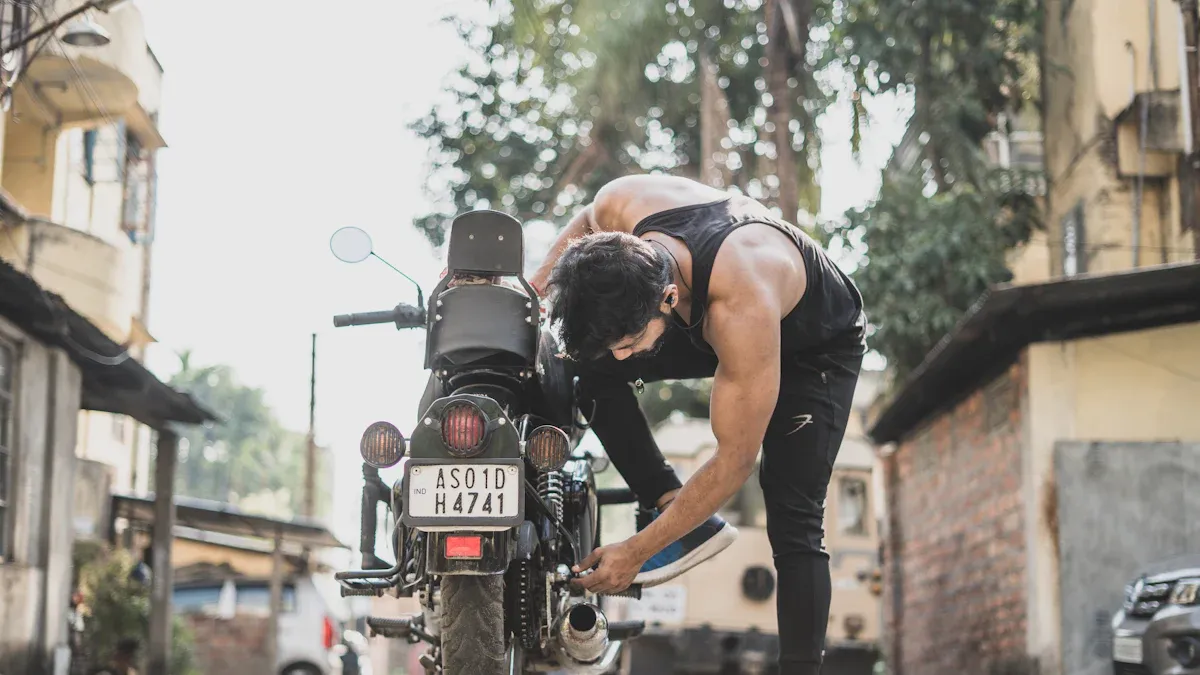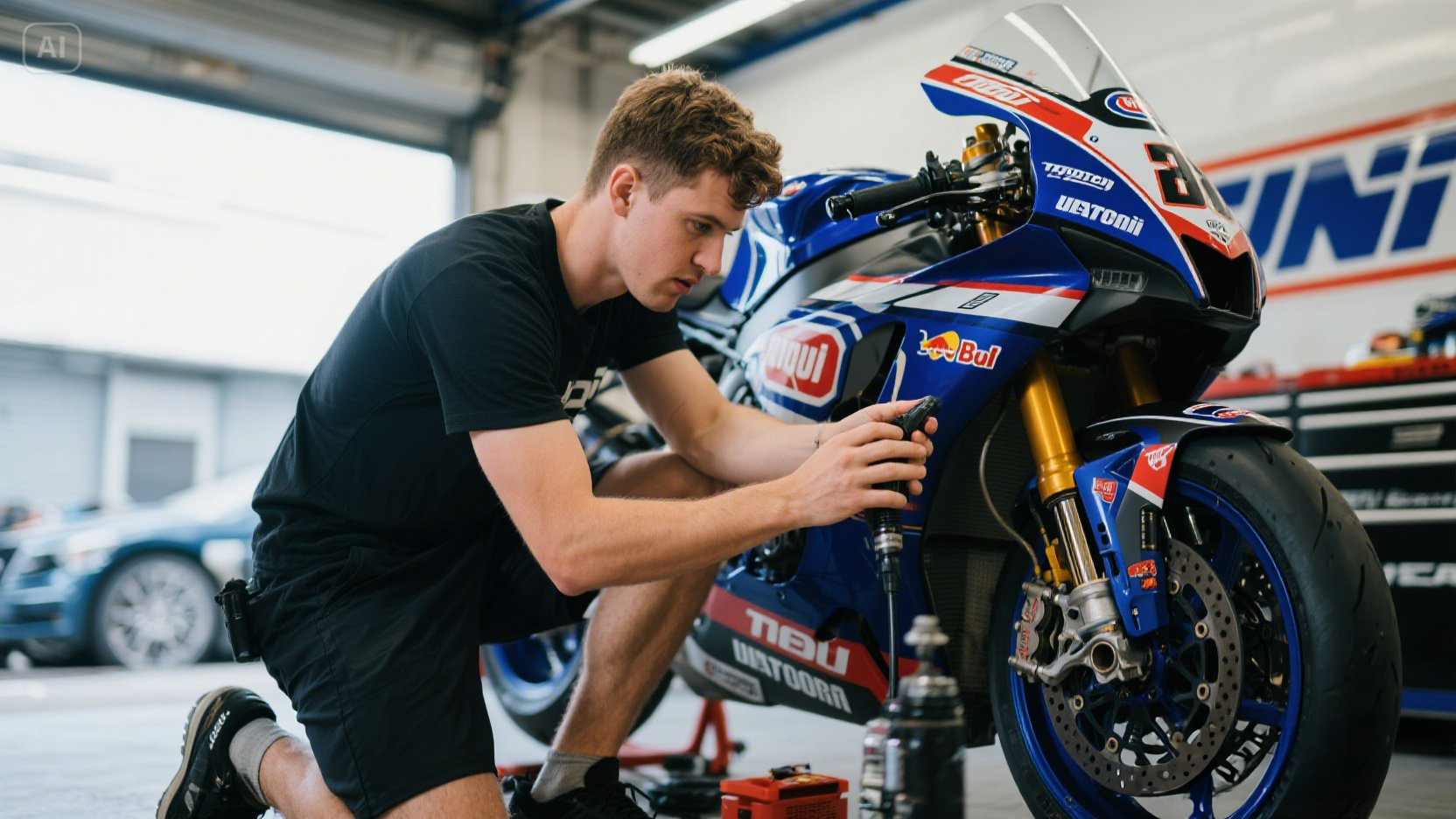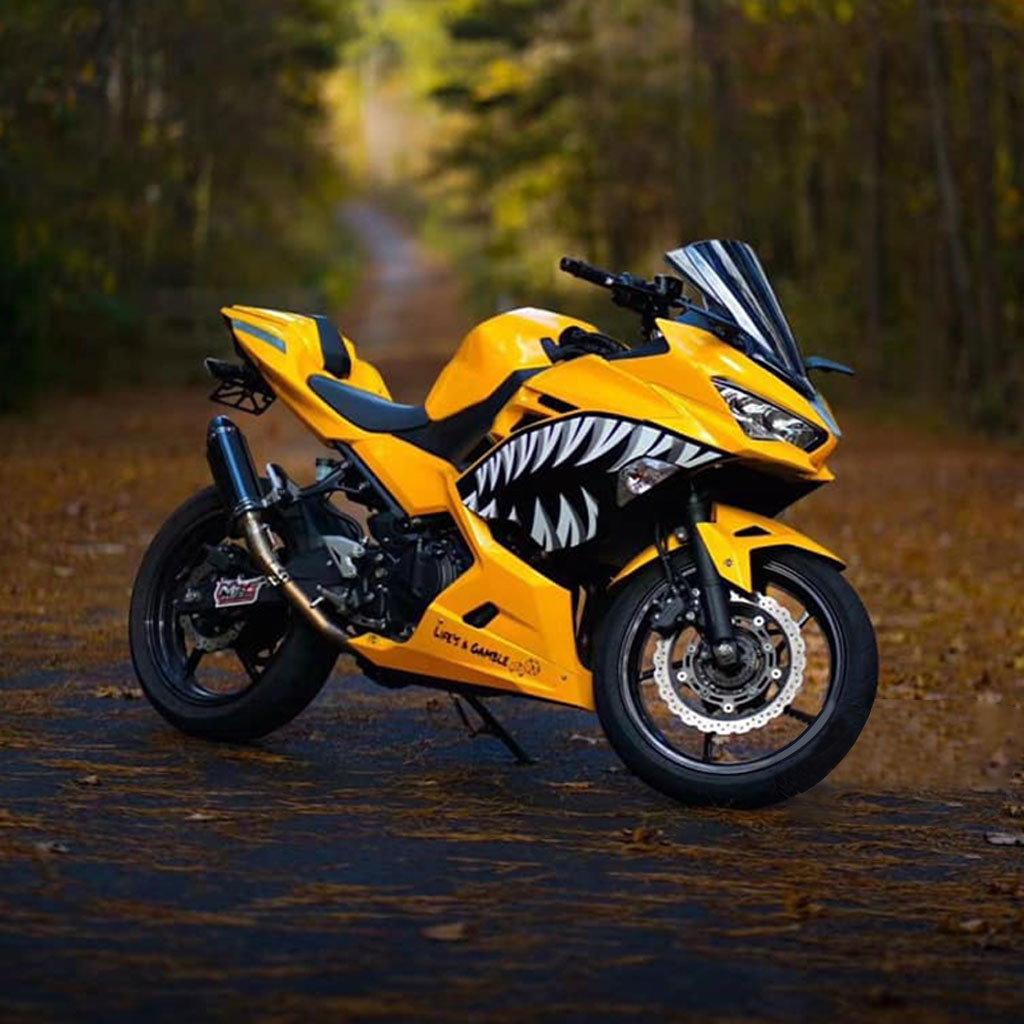Top Tips for Choosing Motorcycle Repair Classes

Picking the right motorcycle repair classes can feel overwhelming, but it doesn’t have to be. You just need to focus on a few key things. Think about your skill level first. Are you a beginner? Maybe you’re looking to sharpen advanced skills. Next, check what the class offers. Does it include hands-on training? That’s a must for real-world experience. Also, don’t forget the cost. You want value without breaking the bank. With a little research, you’ll find a program that’s perfect for you.
Key Takeaways
Know your skill level before picking a motorcycle repair class. This helps you find a course that fits your experience.
Make clear goals to stay focused and excited. Knowing what you want to learn helps you pick the best class.
Choose programs with hands-on practice. Real practice is important for gaining confidence and useful skills.
Check the teacher's background and teaching style. A smart and helpful teacher makes learning easier and better.
Compare prices and value of different classes. Watch for extra costs and think about the training quality before deciding.
Knowing Your Skill Level for Motorcycle Repair Classes
Picking Beginner, Intermediate, or Advanced Classes
Before starting motorcycle repair classes, know your current skills. Are you a complete beginner, or do you have some experience? Classes are usually divided into three levels: beginner, intermediate, and advanced.
Beginner Classes: These are great if you’re new to repairs. You’ll learn basic skills like naming parts, using tools, and doing simple fixes.
Intermediate Classes: If you’ve done some repairs before, these classes are for you. They teach how to find problems and fix systems like brakes or engines.
Advanced Classes: These are for experts or professionals. You’ll learn hard repairs, advanced problem-solving, and even customizing bikes.
Think about what you already know. Choosing the right level keeps you from feeling lost or bored.
Tip: Not sure about your skill level? Look for classes with placement tests or advice sessions. These help you pick the right one.
Making Clear Learning Goals
What do you want to learn in motorcycle repair classes? Clear goals can help you decide. Maybe you want to save money by fixing your bike. Or you might want to work in motorcycle repair someday.
Write down your goals, like:
Learn to do basic fixes, such as oil changes.
Understand how to find and fix engine problems.
Get skills to work in a repair shop.
Having clear goals keeps you focused and excited. It also helps you pick a class that matches what you want to learn.
Note: Some classes give certifications. If that’s your goal, check if the class offers it.
Understanding the Curriculum of Motorcycle Repair Classes
Key Topics Covered in Comprehensive Programs
When picking motorcycle repair classes, check what they teach. A good class should help you learn important motorcycle repair skills. Below are some key topics you might study:
Skill/Activity | Description |
|---|---|
Operating Vehicles | Driving or handling motorcycles and other equipment. |
Making Decisions | Thinking carefully to choose the best solution. |
Inspecting Equipment | Checking for problems or broken parts. |
Repairing Equipment | Fixing, adjusting, and testing machines and tools. |
Troubleshooting | Finding out why something isn’t working and fixing it. |
Equipment Maintenance | Doing regular check-ups and repairs to keep things running. |
These lessons mix hands-on practice with technical knowledge. For example, you’ll learn to fix engines and do simple tasks like oil changes. You’ll also practice checking and repairing parts to keep motorcycles in great condition.
Tip: Choose classes that teach both theory and practice. This helps you understand how and why repairs are done.
Ensuring the Curriculum Matches Industry Standards
Not all repair classes teach the same way. Some might skip important skills or use old methods. To avoid this, make sure the class follows today’s industry standards.
Check if the program uses modern tools and techniques. For instance, does it teach about electronic diagnostic systems? These are common in newer motorcycles. Also, see if they cover safety rules and environmental laws. These are important for working in repair shops.
Look for programs connected to industry groups or manufacturers. These connections often mean the lessons are up-to-date and useful.
Note: Ask the program leader about their lessons. Good programs will explain what they teach and how it helps you with real repairs.
Evaluating Instructors in Motorcycle Repair Classes
Why Instructor Credentials and Experience Matter
Your learning depends a lot on the teacher. A good instructor can make motorcycle repair easier to understand. Look for teachers with strong skills and real-world experience. This shows they know their stuff and can teach you well.
Here’s what makes a top-notch instructor:
Evidence Component | Description |
|---|---|
Teachers with expert training share advanced skills and methods. | |
Practical and Theory Sessions | They mix hands-on work with lessons to give balanced learning. |
Rider Observation and Fault Identification | Good teachers spot errors and show how to fix them. |
Communication Skills and Feedback | Clear talk helps you grasp hard ideas quickly. |
Rider Reflection and Development Planning | They help you review progress and set improvement goals. |
When instructors have these traits, you’ll trust their teaching more. Their real-world tips can also help you learn things not found in books.
Tip: Ask about the teacher’s background. Great instructors are happy to share their experience and skills.
Finding the Right Teaching Style for You
People learn in different ways, so the teacher’s style matters. Some teachers show steps clearly, while others let you try things yourself. Think about how you like to learn. Do you need detailed steps, or do you prefer figuring it out?
A good teacher adjusts their style to fit the class. They explain ideas well, answer questions kindly, and give helpful feedback. Look for someone who makes you feel safe to ask questions and learn from mistakes.
Note: Try to attend a sample class or watch a demo. This helps you see if the teacher’s style works for you.
Importance of Hands-On Training in Motorcycle Repair Classes
Benefits of Practical Experience
When it comes to learning motorcycle repair, nothing beats rolling up your sleeves and getting your hands dirty. Practical experience helps you understand how things work in real life, not just in theory. You’ll feel more confident when you’ve actually fixed a bike yourself instead of just reading about it.
Hands-on training also prepares you for real-world challenges. Many programs even require you to bring your own motorcycle to practice on. This gives you the chance to apply what you’ve learned directly to a real machine. Plus, programs that focus on practical skills often offer career services after you finish. This shows they’re serious about getting you ready for a job in the industry.
Tip: Look for classes that balance hands-on practice with classroom learning. This way, you’ll get the best of both worlds.
Examples of Hands-On Activities to Expect
So, what kind of hands-on work can you expect in motorcycle repair classes? A lot! You’ll likely start with basic tasks like oil changes and tire replacements. These activities help you get comfortable with tools and simple repairs.
As you progress, you’ll move on to more complex jobs. For example, you might learn how to troubleshoot engine problems or fix electrical systems. Some programs even teach you how to use diagnostic tools to find hidden issues. By the end, you’ll have the skills to handle everything from routine maintenance to major repairs.
Note: Don’t worry if you’re a beginner. Most programs guide you step by step, so you’ll build your skills as you go.
Picking the Best Format and Location for Motorcycle Repair Classes
Choosing Between In-Person and Online Classes
When picking between in-person and online classes, think about the pros and cons. Each option has good points and challenges. Here’s a simple table to help:
Format | Advantages | Disadvantages |
|---|---|---|
In-Person | Hands-on practice, real tools, direct help from teachers. | Costs more, less flexible, may need travel. |
Online | Flexible timing, learn anywhere, often cheaper. | Less hands-on work, depends on videos, teacher quality varies. |
In-person classes are great for hands-on learning and teacher help. You’ll use real tools and work on actual bikes. But they can cost more and might not fit your schedule.
Online classes let you learn from home or anywhere else. They’re usually cheaper and let you study when it works for you. But you might miss out on important hands-on practice.
Tip: Can’t decide? Try hybrid classes. These mix online lessons with some in-person workshops for the best mix.
Thinking About Accessibility and Ease
How easy it is to join a class matters a lot. Think about how far you can travel or if you’d rather learn at home. In-person classes might mean driving to a training center, which can be hard if it’s far. Online classes don’t need travel, but you’ll need good internet and maybe some tools at home.
Convenience is also key. If you’re busy, online classes might work better since you can learn anytime. In-person classes have set times, which can be hard if you’re juggling work or other tasks.
Note: Before signing up, check if the location or online setup is easy for you. A class that fits your life will make learning more fun.
Balancing Costs and Value in Motorcycle Repair Classes
Understanding Tuition and Additional Expenses
When choosing a motorcycle repair class, it’s important to know what you’re paying for. Tuition is the main cost, but there are often extra expenses you might not expect. These can add up quickly if you’re not prepared.
Here are some common costs to watch out for:
Tools and Equipment: Some classes require you to bring your own tools. A basic toolkit can cost anywhere from $50 to $200.
Materials: You might need to buy parts or supplies for practice, like oil, filters, or spark plugs.
Books or Online Resources: Some programs charge for textbooks or access to online learning platforms.
Certification Fees: If the class offers a certification, there might be an exam fee.
Before signing up, ask for a detailed breakdown of all costs. This helps you avoid surprises and plan your budget better.
Tip: Look for programs that include tools or materials in the tuition. It might cost more upfront, but it can save you money in the long run.
Finding Affordable Yet High-Quality Programs
You don’t have to spend a fortune to learn motorcycle repair. Many affordable programs offer excellent training if you know where to look. Start by comparing options in your area or online.
Here’s how to find a great program without overspending:
Check Community Colleges: These often have lower tuition and solid training programs.
Look for Scholarships: Some schools offer financial aid or discounts for students.
Consider Online Classes: These are usually cheaper than in-person options. Just make sure they include hands-on practice.
Read Reviews: Feedback from past students can help you spot programs that offer great value.
Note: Don’t just pick the cheapest option. A slightly more expensive class with better instructors or hands-on training can be worth it.
Balancing cost and quality takes a little effort, but it’s worth it. You’ll get the skills you need without breaking the bank.
Using Reviews and Testimonials to Choose Motorcycle Repair Classes
Finding Trustworthy Feedback Sources
Reviews and testimonials help you learn about repair classes. But not all feedback is reliable. Knowing where to search is important.
Start by checking the program’s website or social media. Schools often share student testimonials. For example, a Central Tech graduate said, “Central Tech taught me how to be a good worker and how to get a job done properly.” This shows how the program helps students succeed. Employers also leave reviews. Randy Cook from Tulsa Powersports shared, “We have hired several graduates from Central Tech, and support for tech schools is extremely important.” These comments show the program’s strong reputation.
You can also visit review sites or forums. These often have honest opinions from past students. Look for reviews that mention specific details, like teacher quality or hands-on practice.
Tip: Avoid reviews that are too positive or vague. Real feedback usually includes both good and bad points.
Spotting Red Flags in Reviews
Not all reviews are honest. Some might be fake or overly biased. Learning to spot warning signs can help you avoid bad choices.
Be careful with reviews that seem too perfect. If every comment says the program is “amazing” without any flaws, it might not be real. On the other hand, avoid reviews that only complain without giving reasons. These might come from someone upset for personal reasons.
Look for patterns in reviews. If many people mention bad teaching or old tools, take it seriously. Repeated issues often mean real problems.
Note: Trust your gut. If something feels wrong about the reviews, research more before deciding.
Exploring Certification Opportunities in Motorcycle Repair Classes

Why Getting a Certification is Helpful
Getting a certification in motorcycle repair can lead to better jobs. It proves to employers that you know how to fix tough problems. Certifications also help you stand out when looking for work. Many employers like hiring certified mechanics because they need less training and can start working right away.
Here are some reasons to get certified:
Better Job Options: Certifications like the EETC show your skills and make you a stronger job candidate.
Higher Success Rates: Programs with certifications often have more students finishing on time. For example, the Motorcycle/Power Equipment Technician program had an 86.7% on-time finish rate in 2022-2023.
More Confidence: Meeting industry standards helps you feel ready for hard repairs.
Tip: Want a career in motorcycle repair? Pick classes that offer certifications. They’re worth the cost.
Common Certifications in Motorcycle Repair
Not all certifications are equally important. Some are more respected by employers. Picking the right one can help your career grow.
Certifications from manufacturers or groups like the Equipment & Engine Training Council (EETC) are highly valued. These show you’re trained to fix certain brands or meet industry standards. Employers often trust certified mechanics more because they need less training.
Here are some top certifications to think about:
Brand-Specific Certifications: Companies like Harley-Davidson and Honda train people to work on their bikes. These are great if you want to focus on one brand.
EETC Certification: This is well-known and can improve your chances of getting hired and earning more.
Note: Check which certifications are popular where you live. This helps you pick the best one for your goals.
Choosing the right motorcycle repair classes takes some thought, but it’s worth the effort. Start by figuring out your skill level and what you want to learn. Look for programs with experienced instructors who offer hands-on training. Make sure the curriculum matches industry standards so you’re learning the right skills. Take your time to compare options, read reviews, and check costs. When you find a class that fits your needs, you’ll be ready to tackle repairs with confidence.
FAQ
What tools are needed for motorcycle repair classes?
You’ll need basic tools like wrenches, pliers, and screwdrivers. Some programs provide tools, but others ask you to bring your own. Always check with the class before starting to avoid surprises.
Tip: Buying good-quality tools now can save money later.
Can beginners join motorcycle repair classes?
Yes! Many classes are made for people with no experience. These beginner courses teach basics like naming parts and using tools. You’ll improve step by step as you learn.
Note: Find programs that help you pick the right skill level.
How long do motorcycle repair classes take?
It depends on the program. Short classes last weeks, while longer ones take months. Online courses let you go at your own speed, so timing depends on your schedule.
Tip: Check if the class length matches your learning goals.
Are online motorcycle repair classes useful?
Yes, if they include hands-on practice or hybrid options. Online classes are great for learning theory. But real-world practice is key to becoming skilled at repairs.
Tip: Pick programs with workshops or practice on your own bike.
Is certification needed to work as a motorcycle mechanic?
Not always, but it helps you get better jobs. Employers like certified mechanics because it shows you meet industry standards. Certifications like EETC or brand-specific ones (e.g., Harley-Davidson) are valuable.
Note: Check which certifications are most important in your area.
See Also
Money-Saving Motorcycle Repair Advice You Should Know
Selecting The Perfect Pre-Owned Motorcycle For Your Needs
Key Guidelines For Constructing Your Ideal Motorcycle
A New Rider's Handbook For Motorcycle Maintenance
Five Professional Suggestions For Affordable Fairings Replacement

